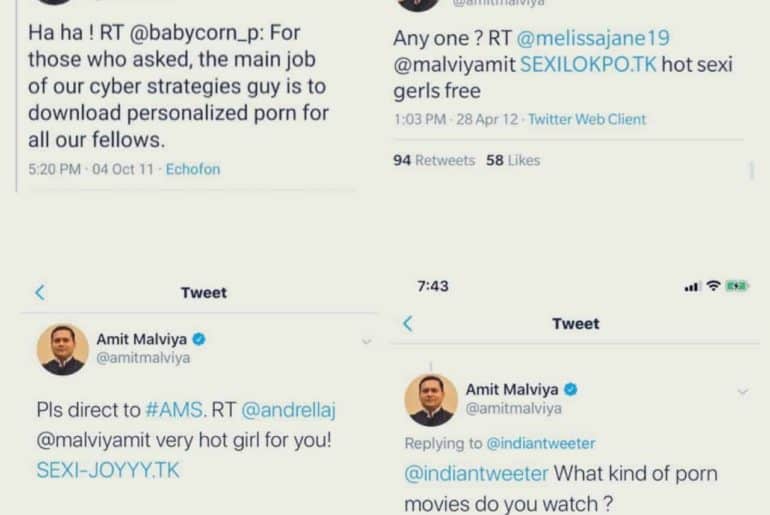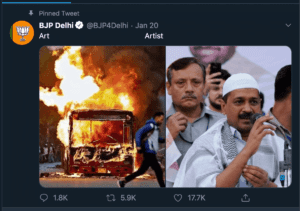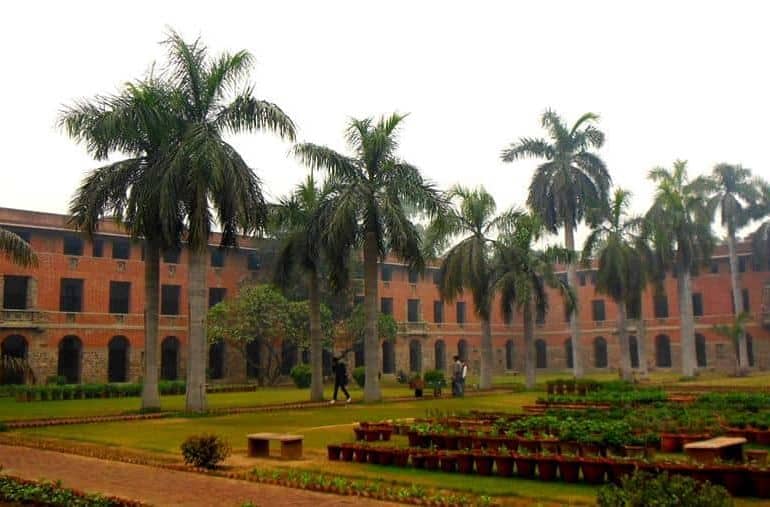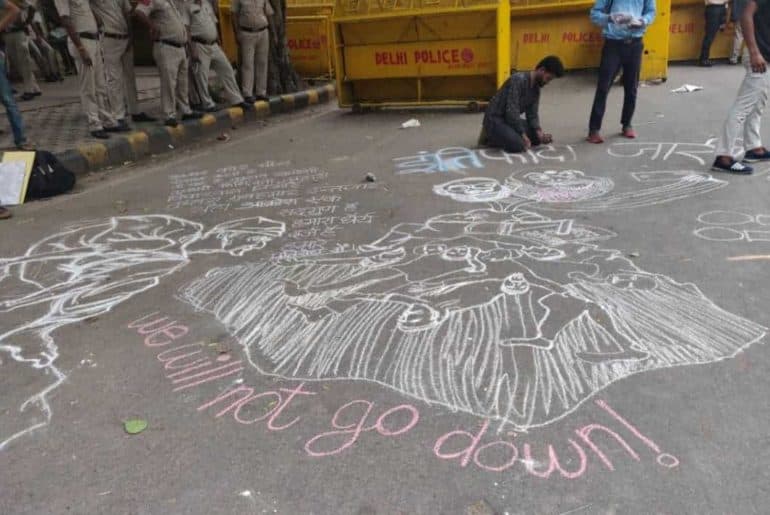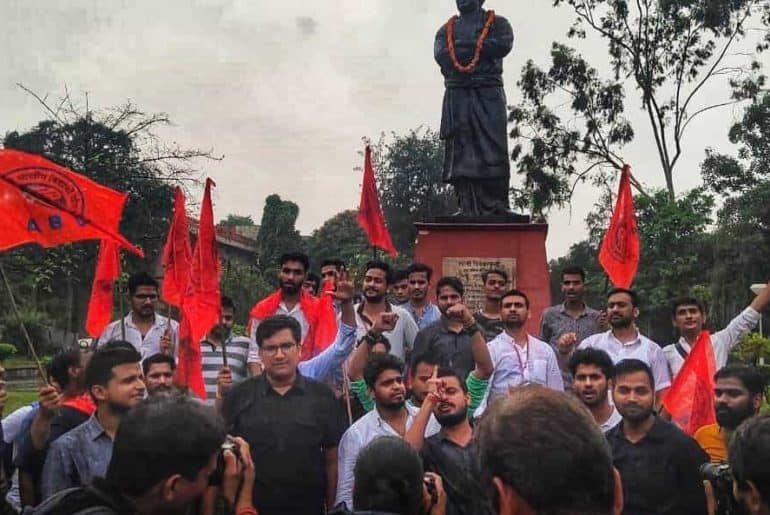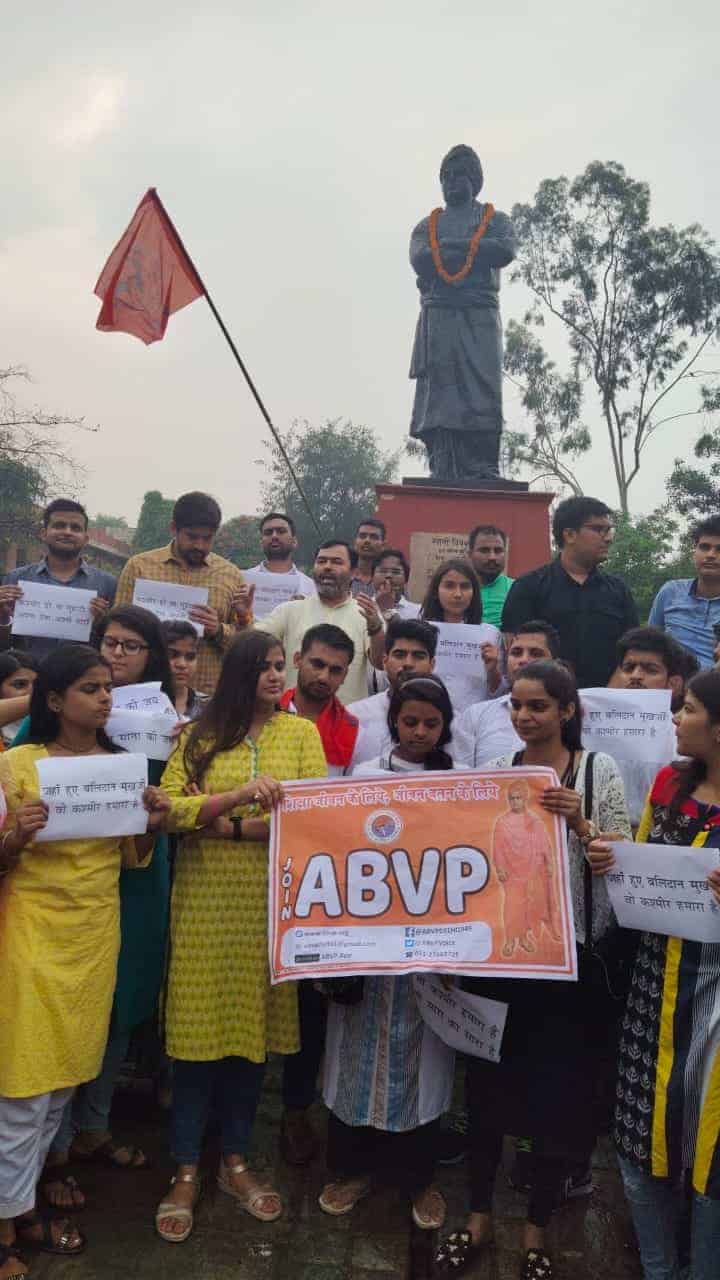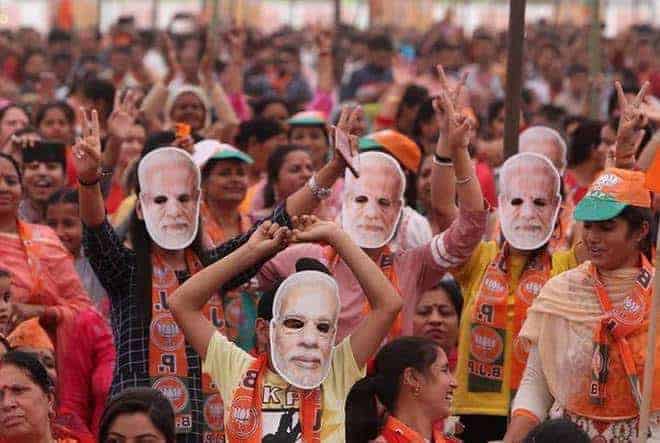Losing internet access is not that big of a deal. It’s just a matter of time… isn’t it? This piece aims to highlight the internalisation of communication blackout that has been normalised by the current regime.
Many might remember waking up one morning, sometime last month, to find their Instagram feeds not refreshing, hence beginning the day on a rather agonistic note. People came to realise later, that this wasn’t their terrible Wi-Fi bailing on them. Instead, this was their Government imposing an internet shutdown allegedly for “controlling violence and misuse by any anti-national elements.”
Post the enactment of the Citizenship (Amendment) Act into a Law on 12th December 2019, widespread protests were observed across the country. These protests grew larger following the news of police brutality on December 15, at a peaceful protest by the students of Jamia Millia Islamia (JMI). In response to these protests, the Government ordered internet shutdowns across different parts of the Country including Assam, Tripura, Meghalaya, Arunachal Pradesh and parts of West Bengal, Karnataka and Uttar Pradesh.
An article in the New York Times, reported, “As the Government of India pushes increasingly provocative policies, it is using a tactic to stifle dissent that is more commonly associated with authoritarian regimes, not democracies: It is shutting down the internet.”
On 12th December 2019, a State-wide internet shutdown was imposed on Assam by the State Government. Contrary to the raging protests observed in the State that day, Prime Minister Narendra Modi tweeted, “I want to assure my brothers and sisters of Assam that they have nothing to worry after the passing of the Citizenship (Amendment) Bill. I want to assure them – no one can take away your rights, unique identity and beautiful culture. It will continue to flourish and grow.” It is ironical how the medium used to provide comfort to these people was the one which had been made inaccessible in the first place.
Following the 134 instances of internet blackouts in 2018, the Government imposed shutdowns “only” 93 times in 2019. Not so bad compared to the previous year, is it? Well, 2019 also observed the world’s longest internet shutdown ever in Kashmir, which was imposed on 4th August, and has crossed 150 days of the blackout. With over 350 shutdowns since 2014, India’s closest competitor is Pakistan, with only 12 shutdowns- followed by Syria and Turkey imposing a shutdown just once each in 2018, both countries not popular for their democratic spirits.
“Living in Meerut, internet shutdown isn’t a big thing. This isn’t the first time we faced this. Every little fight that’s not even a riot, results in us living without the internet with no clue when we would get it back. You become a cave-person and unwillingly you become a part of the act of deceiving the rest of the nation that things are fine in your city,” said Avni Dhawan, a student of the University of Delhi, discussing the normality of shutdowns in certain areas.
Research by Jan Rydzak, a scholar from Stanford University released a statistical report on internet shutdowns, revealing that these shutdowns compel protesters to resort to violent tactics instead of non-violent ones gave that they are less reliant on effective communication and coordination.
Moving forward, the economic impact of these blackouts is alarming. The cost of internet shutdowns to the economy was around Rs 21,336 crore between 2011 and 2017, according to the Indian Council for Research on International Economic Relations—a think tank.
Rajan Matthews, Director General, Cellular Operators Association of India, said, “Internet shutdown is a blunt instrument and it should not be used frequently. In today’s connected world, when you shut down the internet, people cannot do banking, no transactions take place, people face issues in transportation. It affects daily life to a very large extent and therefore it should be used as a last resort. We have, from time to time, conveyed to the Government that its use should be more surgical.”
Matthews further added, “Instead of using internet shutdown as the first alternative to controlling local problems such as cheating in exams, (as was done thrice within 22 days in Rajasthan), the Government should use other administrative methods to control the problem and use curbs on communication only as a last resort.”
Upon conditions of anonymity, a telecom industry association representative quoted, “It is visible that internet shutdowns don’t stop demonstrations. Nor do they hinder the circulation of rumours. It is estimated that the shutdown of internet services leads to a loss of ?2.45 crore per hour across the value chain.”
“The other day I was listening to some office workers, who were discussing the internet shutdown and how it discourages firms to work with repeated hindrances. While almost every other work is carried on or through the internet, this has a big impact on the professional domain,” said Faizan Salik, a student of Jamia Millia Islamia commenting on the impact of these shutdowns on the country’s economy.
It is rather fascinating to note that at the Indian Digital Summit, 2014 Prime Minister Modi quoted, “I dream of a Digital India where access to information knows no barriers”. The increasing number of internet shutdowns following his election that year conceptualises his vision of a “Digital India”.
In September 2019, the Kerala High Court in the landmark case of Faheema Shirin R.K. v. the State of Kerala declared that the Right to Access internet is a basic right which is being violated relentlessly over the past few years.
Internet blackouts strip people of their Right to Express themselves, their Right to Obtain Information or simply their Right to Communicate with their friends and family. Access to the internet allows people a platform for their voices to be heard in the political spectrum.
Certainly, denying this access gives the Government excessive control over the dissemination of information and dominance over the narrative. Regular and indiscriminate shutdowns can have chilling effects on free speech in the long run.
These internet shutdowns aren’t merely an inconvenience, they are a hindrance to the already stagnant economic situation of the country. And above that, they are a gross transgression of our fundamental rights- The Right to Information, The Right to Privacy, The Right to Internet Access.
Feature Image Credits: CNN
Aditi Gutgutia
[email protected]


